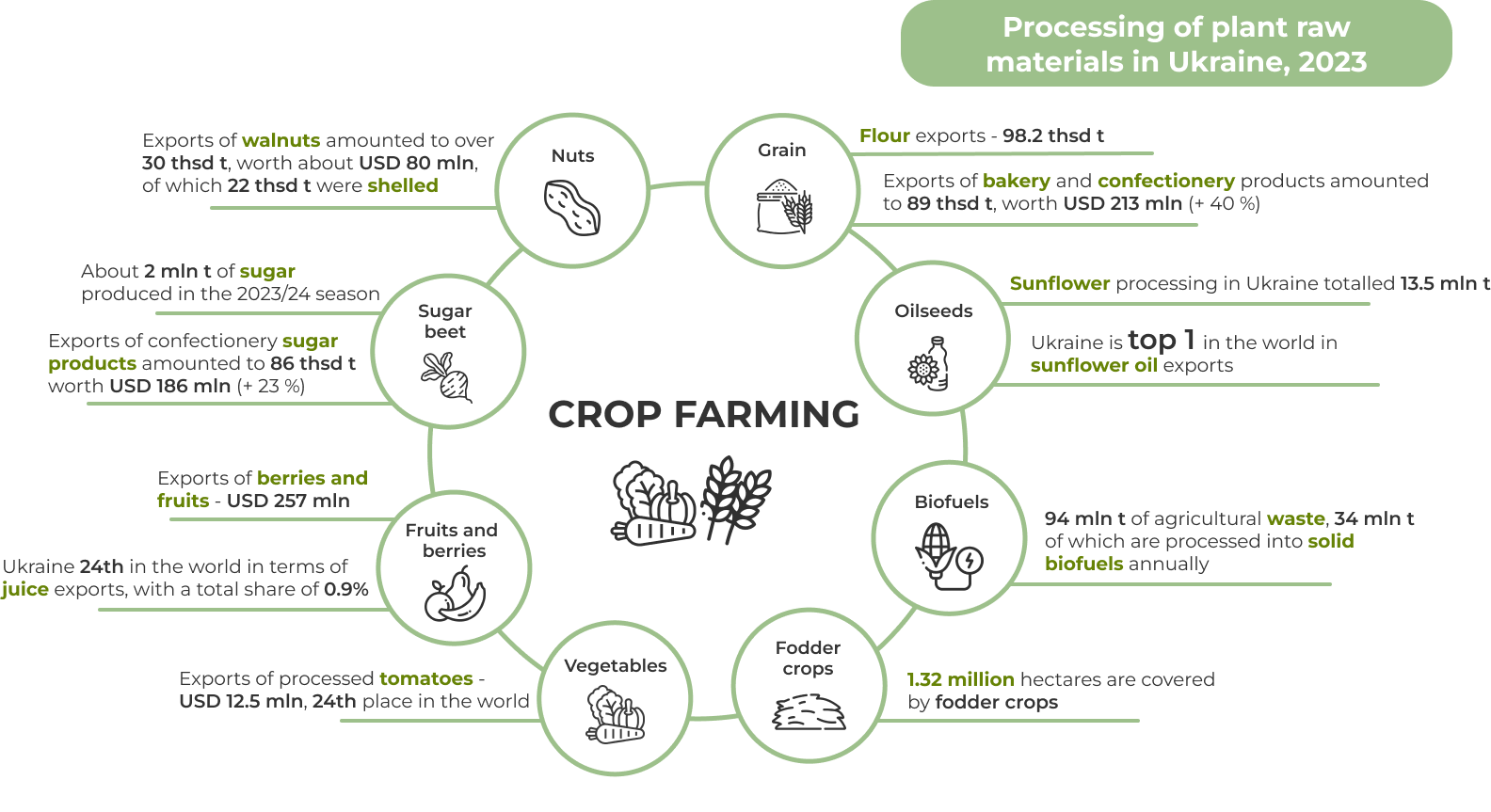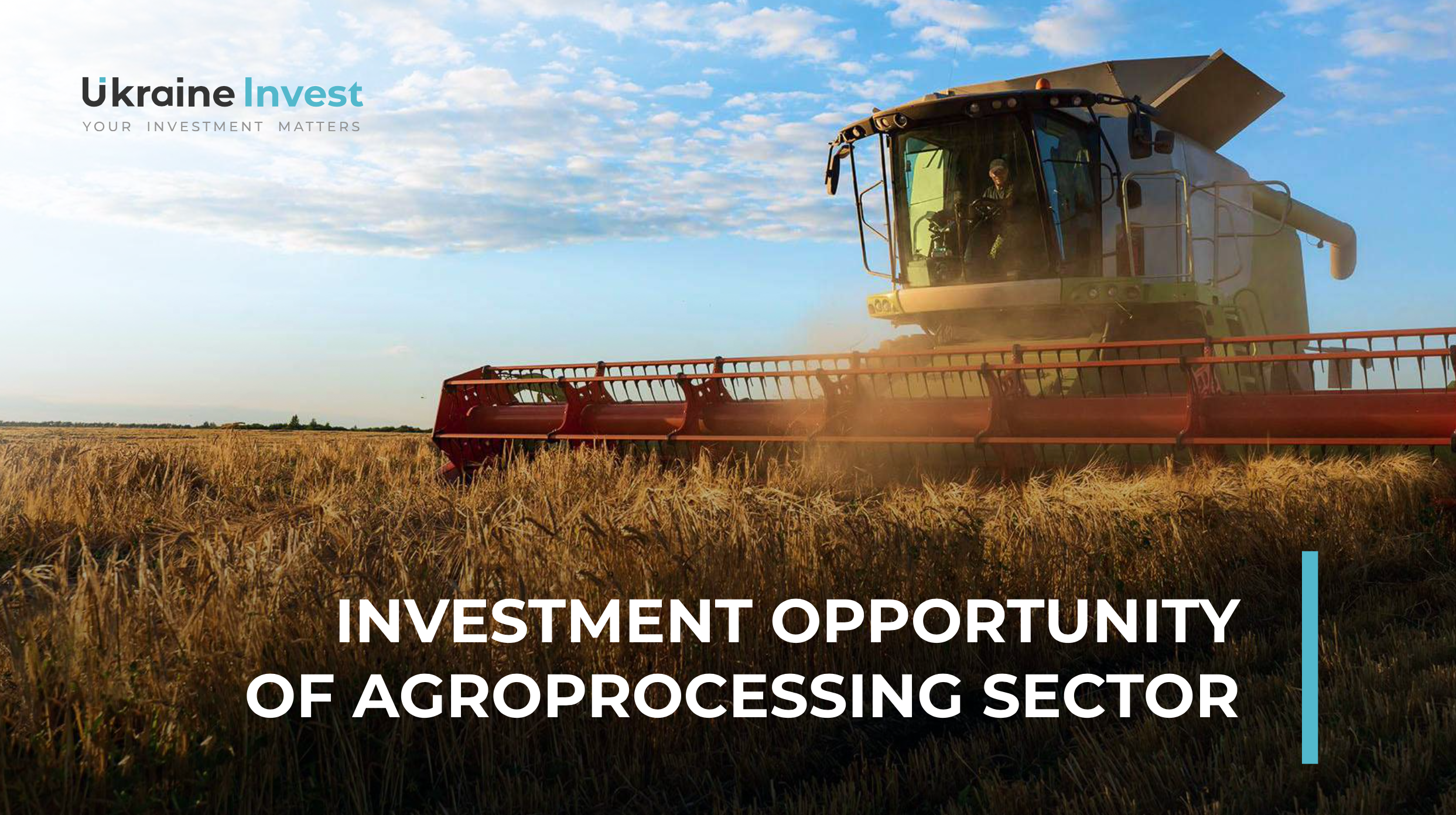Agricultural industry
Historically known as the “breadbasket of Europe”, Ukraine today has all the prerequisites to become the “food basket” of the world. With 33% of the world’s black soil reserves, a favourable climate, and proximity to key markets, our country confidently holds a leading position in agricultural production and exports. The World Food Programme obtains 40% of its wheat from Ukraine, highlighting our country’s role in ensuring global food security, particularly during the current crisis.

The main agricultural crops in Ukraine include grains (wheat, corn, barley), sunflower, sugar beet, legumes, fruits, and vegetables. Ukraine is one of the global leaders in the production and export of grains. The annual harvest exceeds 70 million tons, of which approximately 50 million tons are exported, fully meeting domestic market needs.

Impact of the war
The war has caused enormous losses to the agricultural sector, estimated at billions of dollars. In 2022, losses from foregone revenues due to reduced exports amounted to over 5 billion USD, resulting in significant economic and social consequences for the country and global food security. In the 2022/23 marketing year, grain production volumes significantly declined. Wheat production dropped to 23 million tons, 26% less compared to previous years, and corn production decreased to 31 million tons, representing a 17% decline.
The primary reasons for this decline are military actions that led to the destruction of crops, limited access to agricultural resources, and workforce migration. Despite these challenges, grain exports in the 2022/23 marketing year remained at the previous year’s level, due to significant crop reserves from the 2021/22 marketing year that could not be exported due to the port blockade.
The blockade of ports on the Black Sea has caused severe difficulties in exporting grains. Ukrainian farmers faced challenges in delivering their products to global markets, leading to decreased revenues and increased stocks of unsold grain. Infrastructure facilities such as elevators, warehouses, and transportation routes have been significantly damaged or destroyed. According to the USDA Foreign Agricultural Service, by the end of 2023, over 30% of elevators in Ukraine were damaged or destroyed, complicating crop storage and transportation. This situation has created a demand for new elevators and special storage facilities for the long-term preservation of grains.

russian aggression has also led to a significant deficit in working capital for farmers, complicating the purchase of seeds, fertilizers, and fuel for future sowing campaigns. In terms of employment, over 5 million people were forced to leave their homes, resulting in a labor shortage in the agricultural sector. Farmers are actively implementing adaptation strategies to minimize losses. These strategies include changing the planting areas, adopting new technologies, and optimizing costs.
Investments in infrastructure, including irrigation, transportation, and storage, are key to increasing productivity and reducing crop losses. The implementation of modern technologies in agriculture also contributes to improving production efficiency, enabling Ukrainian farmers not only to regain lost positions but also to ensure sustainable growth in the future. With additional investments in improving agricultural practices, education, irrigation, logistics, and high-value-added production, Ukraine has all the prerequisites for restoring food export volumes to pre-war levels and even doubling these figures.
Although Ukraine has long been among the leaders in agricultural production and export volumes, due to its extremely fertile soil, attractive land lease prices, competitive wages, and logistics, the adaptation of farmers to extremely difficult working conditions presents significant potential for productivity growth, as yield per hectare remains lower compared to similar indicators in other countries.









